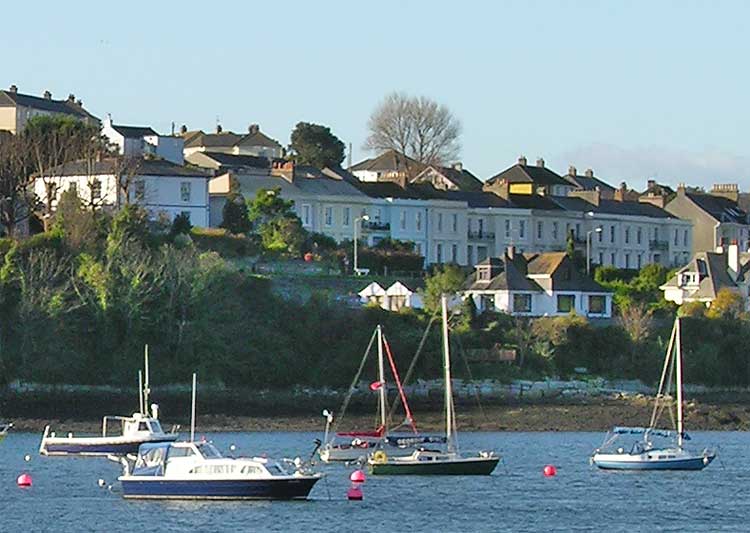|
|
The area now |
The Greenbank area represents a early phase of the development
of Falmouth’s suburbs, with residential development along
the river bank north of the older areas of the town centre.
Nos 1 and 2 Stratton Place were built in the 1790s, followed from
about 1800 by the row of substantial villas known as Dunstanville
Terrace. Several of the other residences were built for or occupied
by packet commanders and the prosperity of the packet and merchant
trades supported much of the building of this period.
The Greenbank area continued to develop as a prestige suburb during
the 1810-20s, with additional terraces built on and above the waterfront,
including Stratton Terrace, Tehidy Terrace, Harriet Place and Penwerris
Terrace, together with a few detached villas, including Erin Lodge
on Symonds Hill and the house now occupied by the Royal Cornwall
Yacht Club. Stratton Terrace is slightly unusual as although called
a terrace, it consists mostly of a series of detached buildings,
of very varied styles.
Virtually all these historic properties, many now listed, have remained
essentially unchanged, and maintained the historic character of
the area, making the the walk to and from the town along the raised
footpath along "the Greenbank" one of the most popular
gentle walks in Falmouth, for both local residents and visitors.
The "Greenbank Gardens", a public amenity space next to the hotel, is also used by many local residents and visitors.
Visitors to the town also see this area from the water on the "Park
and float" bus or ferry service on their way to the town
centre and the Maritime Museum. This historic portion of the town
is very visible in views from outside, particularly from Flushing
and Trefusis. |
|









